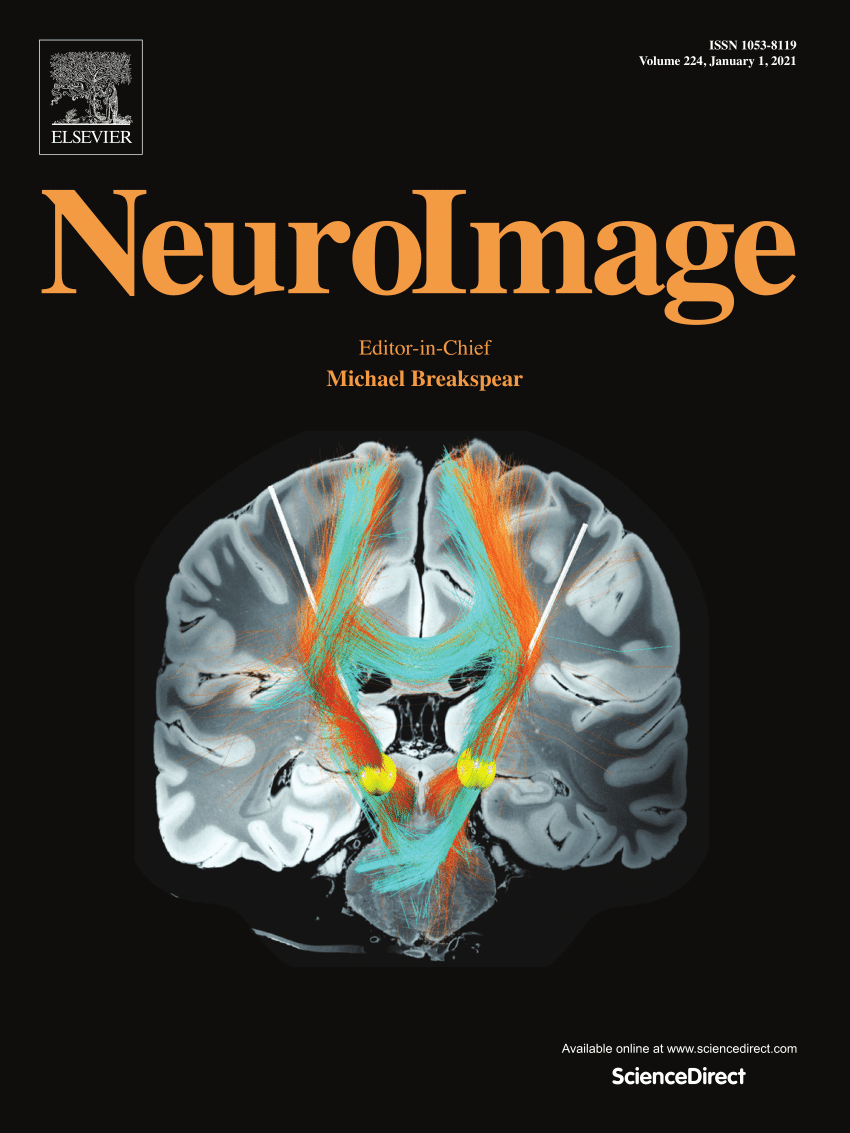Chronic blue light exposure induced spatial anxiety in an adolescent mouse model: Per2 upregulation and altered brain resting-state functional activity
IF 4.7
2区 医学
Q1 NEUROIMAGING
引用次数: 0
Abstract
Background
Blue light (BL) is the primary component of light emitted from 3C devices. The use of 3C (computers, consumer electronics, and communication) devices has been increasing among all age groups. How social interaction and spatial cognition are affected in adolescents after long-term 3C device usage at night remains unclear.
Methods
Five-week-old mice were exposed to BL. Subsequently, these mice were subjected to social behavior tests, functional magnetic resonance imaging, and histopathologic analyses.
Results
BL exposure increased spatial anxiety but did not affect sociability, social novelty, or motor coordination. Also, BL exposure altered brain connectivity in the hippocampus (Hip), thalamus, and striatum, and it reduced brain activity in the retrosplenial cortex and dorsal part of the Hip. Spatial anxiety was associated with brain alterations. Although BL exposure reduced the size of retinal oligodendrocytes and increased the expression of the Period 2 circadian protein, it did not result in brain inflammation, at least not in the Hip.
Conclusion
Our findings highlight that long-term BL exposure in adolescents induces spatial anxiety. The underlying mechanisms include changes in brain activity and connectivity and the disruption of the circadian rhythm.

慢性蓝光照射诱导青春期小鼠空间焦虑模型:Per2上调和大脑静息状态功能活动改变。
背景:蓝光(BL)是3C设备发出的光的主要成分。在所有年龄组中,3C(电脑、消费电子产品和通讯)设备的使用都在增加。青少年夜间长期使用3C设备对社会互动和空间认知的影响尚不清楚。方法:将5周大的小鼠暴露于BL中,随后对这些小鼠进行社会行为测试、功能磁共振成像和组织病理学分析。结果:BL暴露增加了空间焦虑,但不影响社交能力、社交新颖性或运动协调性。此外,BL暴露改变了海马体(髋关节)、丘脑和纹状体的大脑连通性,并降低了脾后皮层和髋关节背侧的大脑活动。空间焦虑与大脑变化有关。虽然BL暴露减少了视网膜少突胶质细胞的大小,增加了Period2昼夜节律蛋白的表达,但它没有导致脑部炎症,至少在髋关节没有。结论:我们的研究结果强调了长期接触BL的青少年会引起空间焦虑。潜在的机制包括大脑活动和连通性的变化以及昼夜节律的破坏。
本文章由计算机程序翻译,如有差异,请以英文原文为准。
求助全文
约1分钟内获得全文
求助全文
来源期刊

NeuroImage
医学-核医学
CiteScore
11.30
自引率
10.50%
发文量
809
审稿时长
63 days
期刊介绍:
NeuroImage, a Journal of Brain Function provides a vehicle for communicating important advances in acquiring, analyzing, and modelling neuroimaging data and in applying these techniques to the study of structure-function and brain-behavior relationships. Though the emphasis is on the macroscopic level of human brain organization, meso-and microscopic neuroimaging across all species will be considered if informative for understanding the aforementioned relationships.
 求助内容:
求助内容: 应助结果提醒方式:
应助结果提醒方式:


